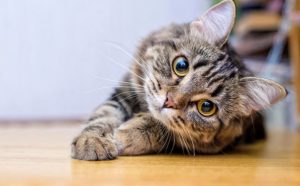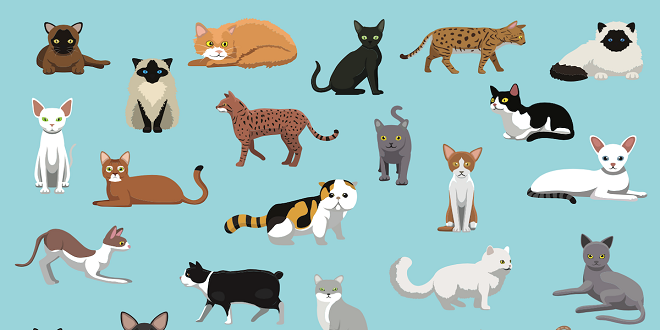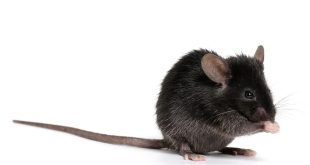Cats and dogs are high up on the list of human’s most favorite pets. The sheer number of these creatures that are part of families across the country and beyond is proof of this.
Because of human interest in both animals, lots of questions are being asked especially about the breeds available. The truth is that pet parents and people at large know a lot more about canines than felines.However, recent studies on cat intelligence have been shedding light on the cognitive abilities of cats, showcasing their problem-solving skills, memory, and capacity for learning. Understanding more about the intelligence of cats can deepen the bond between feline companions and their human caregivers, fostering a greater appreciation for the unique qualities of our feline friends.
Well, this article intends to keep you well informed about felines. We would do this by providing answers to some frequently asked questions about feline breeds. Knowing this much about cat breeds will help you in several ways. This is especially if you plan on adopting or buying a feline companion.
How Many Classes of Cat Breeds Are There?

There are 3 basic classifications. All the breeds available fall under one of these 3 categories. The way they come about is what determines the class they belong to.
What Are the Classes of Cat Breeds?
Cross-bred, natural, and mutated are the classes of these feline breeds. Any of the several options that can be gotten will be one of these three classes.
If you prefer a more domesticated companion, consider choosing an indoor cat from one of these classes.
Cross-Bred
The cross-bred class is a product of 2 or more feline lines being crossed together. You should know that some established lines of this animal are often used.
This is because of the remarkable features and behavioral attributes that they possess. The Siamese breed has been used in creating many cross-bred felines for instance.
Natural
These are purebred felines. This means that they evolved without human assistance as it is with the other classes. However, breeders can use them actively in creating cross-bred and even mutated breeds.
Mutated
Mutated breeds are also known as hybrids in certain quarters. The term is perfectly indicative of the way felines in this category come to be.
Felines that belong to this category become what they are because of the skill of the breeders. These professionals identify features in certain cats that are wanted in the new breed. They then use their skill to come up with a mutated breed that would have those qualities and/or even behavioral traits.
For the record, the possibility of having mutated feline creatures is responsible for the emergence of many of the latest breeds. The business of creating mutated cats has also taken a new turn in the past decades.
This is because of how breeders try to create newer kinds of hybrids from mutated cats alone. In the bid to do this, felines like the Highlander and the Minskin have been used. For more on this subject, you can visit: https://pubmed.ncbi.nlm.nih.gov/25701860/
Which Cats Belong to the Cross-Bred Class?
Some of the cats that fall into the cross-bred category include Tonkinese, Snowshoe, Oriental Shorthair, Ragamuffin, Javanese, Havana Brown, Jungala, Himalayan, Ocicat, Colourpoint Shorthair, Balinese, and American Bobtail
What you would realize from the examples above is that a peculiar breed: Siamese – was actively used in coming up with every one of these feline creatures. In the same vein, some cats fall into this category without crossing Siamese cats with any other feline type.
Some of these include Bombay, Tiffany/Chantilly, Australian Tiffanie, Burmilla, Australian Mist, Nebelung, Exotic, and Mandalay. In creating the ideal kind of cross-bred, the personality and appearance of the crossed felines are taken into consideration.
Which Cats Belong to the Natural Class?
Some of the cats that belong to this class include Birman, British Shorthair, Burmese, Arabian Mau, British Shorthair, Agia Eleni, Abyssinian, American Shorthair, Chartreux, Antipodean, Persian, Sokoke, Turkish Angora, Somali, Turkish Van, Russian Blue, Rugkatt, Siberian, Nepali, Singapura, Maine Coon, Mexican, Kusing Buso, Dragon Li, and Celtic Shorthair.
These cats have been around for a very long while. We mean way before the practice of cross-breeding these creatures and mutating them was discovered or even an option. However, some of them crossed with each other without the assistance of humans. The results are still considered purebred.
Other than this, the location where these creatures were discovered speaks volumes about them. This is why a good number of them also have their geographical locations attached to their names. The Arabian Mau and Egyptian Mau are perfect examples.
Furthermore, the exact location where some of these cats hail from is unknown or not certain. The Chartreux is an example. This cat is mostly associated with France but might have come from Syria. But this is not even certain.
Birman also has the same issue. It is no more than a probability that it is from Burma. It might as well not be from there. No one might ever be able to tell because of the timeline.
Which Cats Belong to the Mutated Class?
Some of the felines in this class include Cheetoh, Pixie Bob, Serengeti, Toyger, and Savannah. Felines that belong to this category are not as many as those in the other two classes.
However, they are the latest class of breeds. Also, the practice of mutating felines is likely going to continue and more creatures will come into the picture.
Many feline associations have a hard time admitting felines in this class into the list of cats. This is because they need to be certain that these cats possess all that qualifies them to be cats.
This is why some of these associations take ample time to study these hybrids before giving a verdict. Some have even openly refused to admit that some mutated creatures are cats. If you would like to know more about this class of felines, you can read this article.
Conclusion
Answers to a few frequently asked questions about cats have been answered here. This is especially as it concerns the classes of breeds available. So, you are in a better position to choose between cross-bred, natural, and hybrid felines. We advise that you
 Naa Songs
Naa Songs



